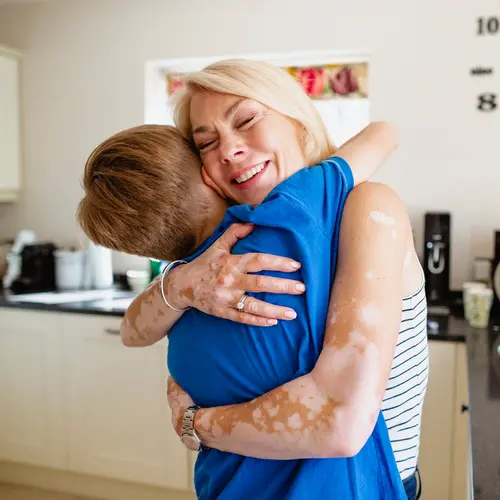Lee Anderson developed the skin condition rosacea when she was in her 40s. "My daughter used to tease me that I had 'slap-face,' because that's what it looked like all the time -- that I'd been slapped. It was very embarrassing," says Anderson, now 54. The condition grew worse, and she eventually found herself turning down social invitations. "It ate away at my self-confidence."
Anderson was in plenty of company. An estimated 14 million Americans have rosacea, which is a fairly common skin condition. "It used to be just women who worried about rosacea, but men do get it -- and are now more conscious about their appearance as well," notes Jerome Shupack, MD, professor of dermatology at NYU Medical Center. That said, women are about three times more likely to develop rosacea.
Symptoms of rosacea include flushing and red blotches that appear on the cheeks, nose, chin, and forehead. Tiny pimple-like bumps and the appearance of blood vessels can also develop on the skin. In more severe cases, rosacea can cause swollen, bumpy noses from thickening of the skin. (The late actor W.C. Field's bulbous nose -- now believed to have been caused by rosacea -- was mistakenly attributed to alcoholism. It is true, however, that alcohol can trigger rosacea symptoms.) Ocular symptoms -- including red, dry, and irritated eyes, pain, blurred vision, and, less commonly, inflammation of the cornea and possible loss of vision -- may also occur.
Possible Causes of Rosacea
Doctors still don't know what causes rosacea. But recent early research suggests the culprit may be the overproduction of two inflammatory proteins, resulting in abnormally high levels of a third, which may lead to rosacea's symptoms. Another theory holds that symptoms may stem from the body's response to microscopic mites living in the hair follicles. Age and genetics weigh in, too. The condition shows up most often in those ages 30 to 50, particularly in fair-skinned people prone to blushing.
Rosacea Triggers
Once you have the skin condition rosacea, many different things can trigger an outbreak, including sun exposure, emotional stress, hot weather, wind, excessive exercise, drinking large amounts of alcohol in a short period of time, hot baths, cold weather, spicy food, humidity, hot beverages, and irritating skin products.
Rosacea treatment depends on symptoms. For those with reddened skin, an over-the-counter moisturizer can ease dryness and reduce irritation, and a dermatologist may recommend topical products or oral medications. Some dermatologists use light and laser therapy to zap visible blood vessels, reducing redness. Oral antibiotics or topical medications are used to treat the acne-like bumps.
And those whose noses have become swollen with excess skin could require laser resurfacing treatments or, in severe cases, surgery. Artificial tears, ointments, and oral antibiotics can help relieve eye symptoms. Anderson tried laser treatments, and they did the trick. "I'm no longer embarrassed by how I look," she says.

